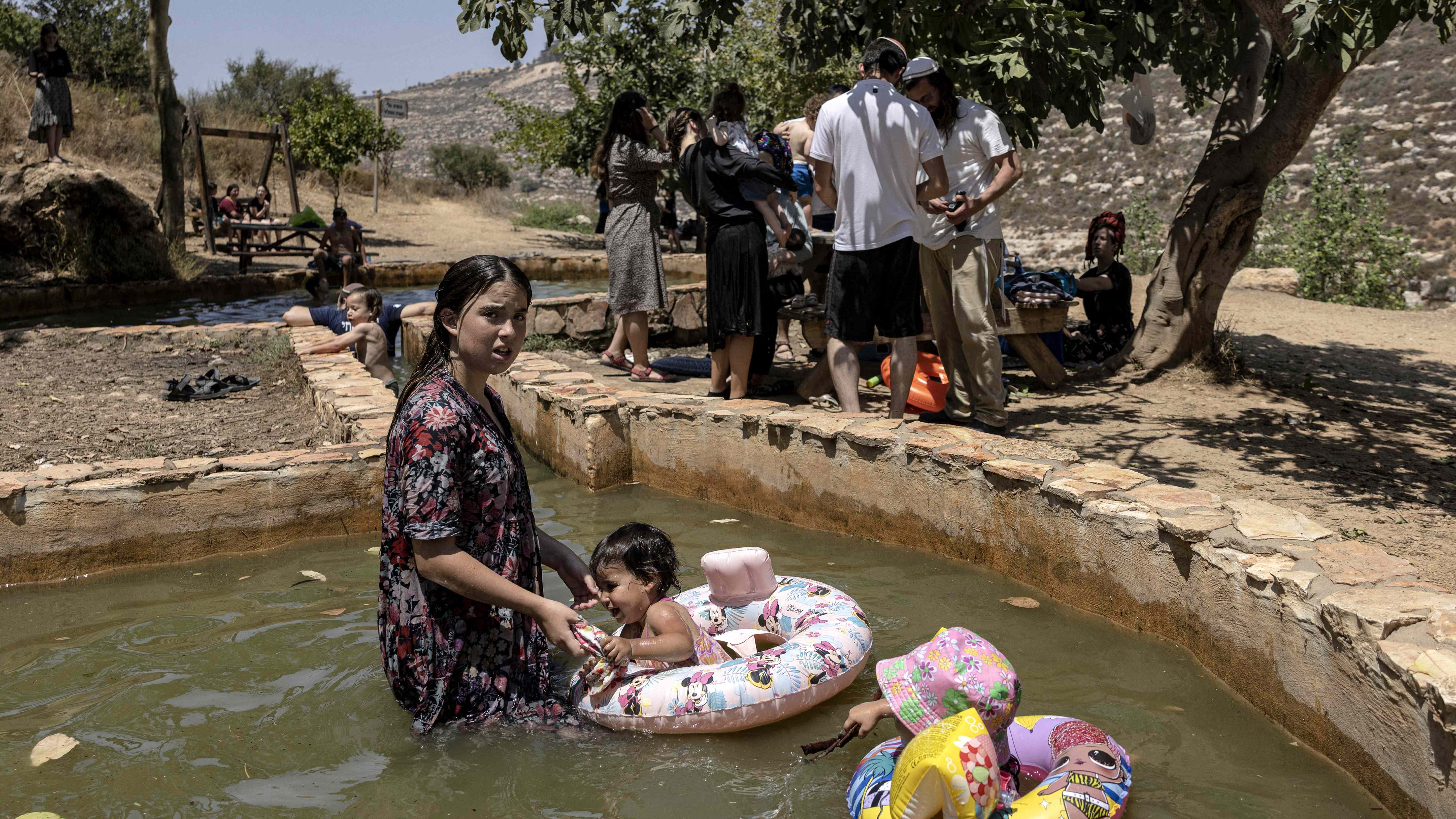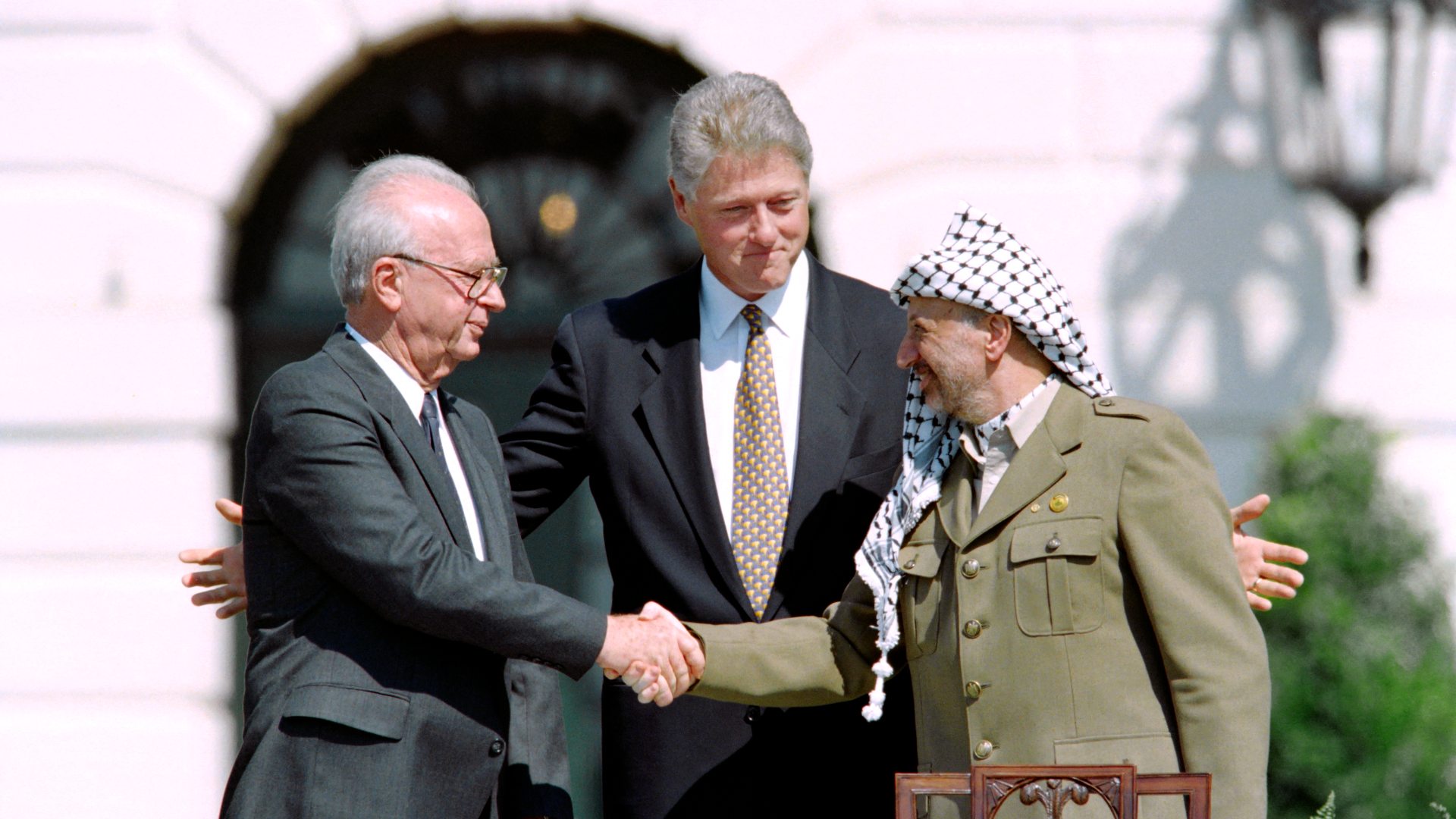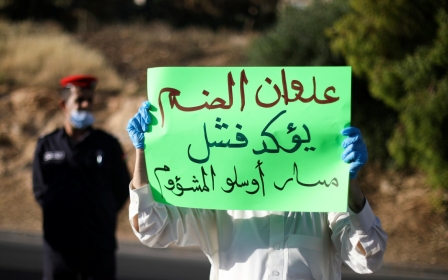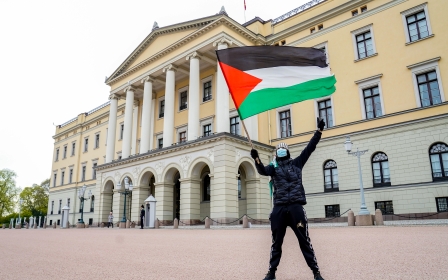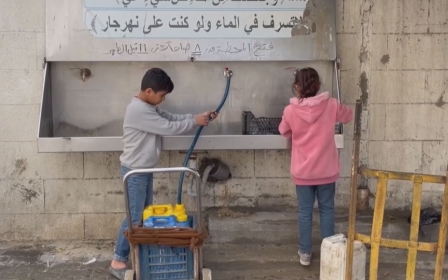Oslo Accords: How the deal entrenched Israel's control over Palestine's water access

During the hot summers of the occupied West Bank, temperatures can reach 45C. Water consumption naturally increases during such heat waves, and for some Palestinians harsh summers and water scarcity is an existential concern.
Youssef Bisharat is one such Palestinian who lives with his family in Khirbet Makhoul, a small Bedouin dwelling in the northern Jordan Valley.
His nine children do their best to restrict their water use. Each showers just once a week and bathwater is saved for use in household cleaning and for laundry. There's also livestock to consider.
To make up the shortfall, Bisharat buys water tankers that cost 120 shekels ($32) each and supply enough water for around two days. A typical bill for the month comes out to $500.
It's expensive but Bisharat says that "what's more important is to be able to [secure] drinking water for us and for the livestock we depend on for living".
New MEE newsletter: Jerusalem Dispatch
Sign up to get the latest insights and analysis on Israel-Palestine, alongside Turkey Unpacked and other MEE newsletters
The pressures of living in such a water-scarce environment have been enough to force many Palestinian families out of the area.
There used to be dozens living in the village but now there are only four besides Bisharat's family.
But their struggles are not one of a lack of resources or poor infrastructure. There is an abundant freshwater source located near the village.
Instead, as the Bisharat family struggles with securing the basic necessity of life, they watch an Israeli settler family who seized a neighbouring area enjoy a rich supply of water.
"A few days after [the settler] took control of the area, water supply was extended to his tent," Bisharat told Middle East Eye, pointing to a tent set up by a neighbouring Israeli settler.
"A few years ago, this area enjoyed abundant water. But with settlement expansion, settlers have been enjoying this water at the expense of Palestinians. Rendering Palestinians thirsty became one of Israel's tactics to pressure them into relinquishing their lands."
Disparity in distribution
The Palestinian struggle for water security is not limited to the Jordan Valley, which is designated as part of Area C of the occupied West Bank and therefore under full Israeli military control - which Israel intends to fully annex.
The struggle also extends to areas administered by the Palestinian Authority (PA) across the occupied land.
Ramallah, the central West Bank city that serves as the commercial and political hub of the West Bank, as well as its surrounding areas have also been hit hard by the issue.
Like in Khirbet Makhoul, the crux of the issue is Israel's control over water sources - a status quo entrenched in the Oslo Accords.
After its occupation of the West Bank started in 1967, Israel took control of Palestinian aquifers there, eventually taking an 85 percent share of water resources.
The Oslo Accords, which were signed by Israel and the Palestine Liberation Organisation (PLO) in 1993, granted Israel continued control over water sources in the region pending a resolution to the conflict.
As part of the agreement, negotiations on water rights would be deferred until permanent status negotiations, alongside the status of Jerusalem, the right of return for refugees, illegal settlements, security arrangements and other issues.
The final-status talks, which were scheduled to take place five years after the implementation of the Oslo Agreement (in 1999, as was planned), have not taken place to date.
In practice, this means Palestinians in the occupied West Bank are at the mercy of the Israeli occupation when it comes to their water supply.
According to B'Tselem, Israelis, including those living in settlements, have an average daily water consumption of 247 litres per person, an amount that is three times higher than the 82.4 litres per person used by Palestinians in the occupied West Bank.
Only 36 percent of the latter receive running water every day, while 47 percent have it for less than 10 days every month.
The 7,000 residents of the village of Kubar, located to the northwest of Ramallah, have long suffered from Israel's restrictions.
A few years ago, Israeli water supplies to the Jerusalem Water Utility, a Palestinian distribution company in the village, used to be provided twice a week. But over the years, Israel has gradually reduced the water allocation granted to the Palestinian company. Today, residents receive water supplies once every 14 days.
"Residents buy water in tankers that cost around 300-500 shekels ($80-130) each," Ezzat Badwan, one of the village's residents, told MEE.
"Some families reduced their water consumption to a minimum, as they cannot afford to buy water tankers," he added.
Despite its own problems, Badwan knows the situation in his village is not as bad as others, as he has experience working for the local municipal council.
To mitigate his family's own dependance on Israeli water supplies, he has constructed a well in his backyard to collect rainwater during the winter, which he then uses during the summer.
The legacy of Oslo
The Oslo Accords stipulated the establishment of a Water Management Authority and its Declaration of Principles stresses the need to ensure "the equitable use of shared water resources, during and after the transitional period of the Oslo Agreement".
However, further agreements within the accord state that while the PA is responsible for taking care of water and sewage systems in the areas it administers, it needs to make sure that these systems don't affect the overall water supply.
With regard to water use, the agreement states that “without derogating from the powers and responsibilities of the Palestinian Authority, the Palestinian Authority shall not adversely affect these quantities".
Meanwhile, the agreement states that Israel's Mekoroth Water Company can continue to manage supply to Israeli settlements and military areas.
This disparity gives Israel the means to assert full control over Palestinian water resources, maintaining its dominance over them.
For decades, Israel has maintained a principle of water distribution that existed before its signing of the Oslo Accords, which stipulates that Israelis can consume water based on demand, while Palestinians are limited to a predetermined allocation of 15 percent.
The agreement did not address the fact that the West Bank is divided into Areas A, B and C when it came to arranging water distribution between Israel and the Palestinians.
It eventually granted Israel the right to control water sources even in Areas A and B, which are controlled by the PA.
Most water sources are already located in Area C, which is fully controlled by Israel and constitutes nearly 61 percent of the West Bank.
While the Oslo Accords allow Israel to pump water from areas it controls to the settlements in the occupied West Bank, it also restricts the PA from transferring water from one area to another within the areas it administers in the West Bank.
'In Israel's hands'
Israel has disavowed most of the provisions of the Oslo Agreement, but it remains committed to provisions related to water.
ِA member of the Palestinian delegation that signed the Oslo Agreement, who asked to remain anonymous, told MEE that the delegation's lack of expertise at the time led to the signing of an agreement that "placed the fate of Palestinian access to water in Israel's hands".
"Most Palestinian water experts withdrew from the negotiations early on in the Oslo process due to their dissatisfaction with how the negotiations were being conducted," he said. "As for the politicians, their primary goal was reaching an agreement."
Abdulrahman Tamimi, a Palestinian water affairs researcher, was one of the experts who withdrew before the signing of the agreement.
'Israel fully controls all water resources and has the power to reduce the allocation granted to Palestinians'
- Abdulrahman Tamimi, Palestinian water expert
"Anyone who reviews the history of the Zionist movement would know very well the importance of the water issue, and that it is not easy for Israel to allow the Palestinians to control water resources," he said.
According to Tamimi, Israeli ambitions to control water resources began in the early 1930s, early on during the settlement of Palestine.
This process accelerated after the occupation of the West Bank, East Jerusalem and the Gaza Strip in 1967, ultimately culminating in the Oslo Agreement.
Two months after the capture of the occupied territories, Israel issued Military Order No. 92, which transferred authority over all water resources in the occupied territory to the Israeli military, and gave "the absolute authority of controlling all issues related to water to the Water Officer who is appointed by the Israeli courts".
This order revoked all drilling licences issued by the Jordanian government and designated the Jordan River area as a military zone, eventually denying Palestinians any access to water and granting Israel full control over water resources which were used to support its settlement projects.
Under the Oslo Accords, the Palestinian delegation gave de facto consent to codifying this situation pending a permanent agreement.
Tamimi says that the water-related aspect outlined in Article 40 of the Oslo II Accord, concerning the Water and Sewage Agreement, is "the worst part of the agreement".
The first loophole in the agreement, as described by Tamimi, was the separation between water services, which include water networks, distribution and billing, and which were largely handed over to the PA, and water resources, which remained under the control of Israeli water companies.
Another issue was the Joint Water Committee, which was established to discuss water-related matters concerning Palestinians, but granted the Israeli committees the exclusive right to object to proposals.
According to the agreement, Israel transfers 15 percent of water to the PA, a percentage that has not changed over the past 30 years, despite population growth and climate changes that have affected the region.
Tamimi concluded: "Some may think that the Palestinians control 15 percent of water resources. In fact, Israel fully controls all water resources and has the power to reduce the allocation granted to Palestinians, as is happening today."
This article is available in French on Middle East Eye French edition.
Middle East Eye delivers independent and unrivalled coverage and analysis of the Middle East, North Africa and beyond. To learn more about republishing this content and the associated fees, please fill out this form. More about MEE can be found here.



